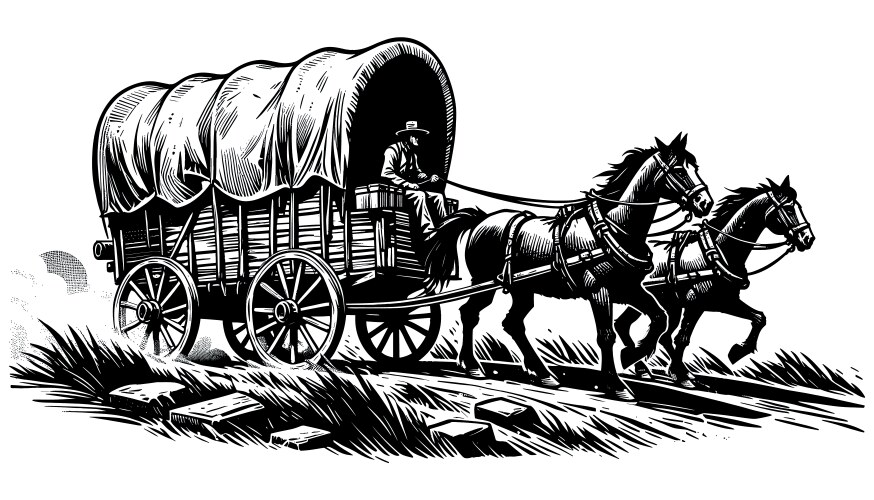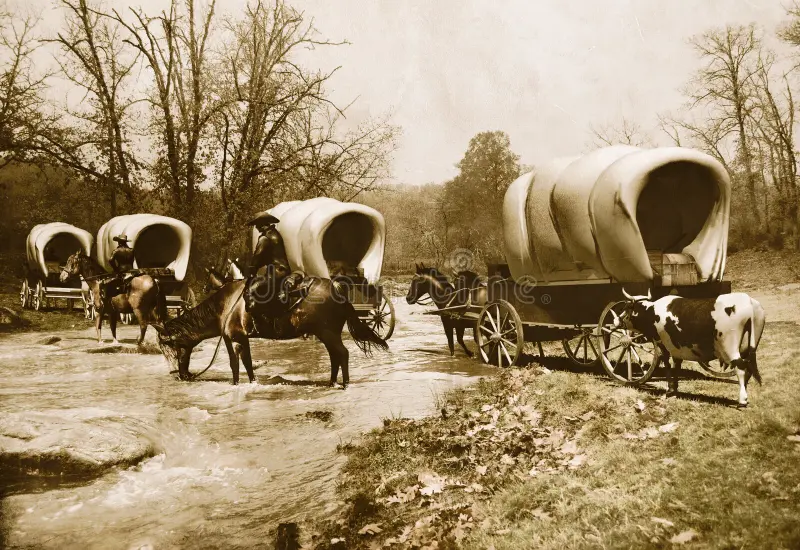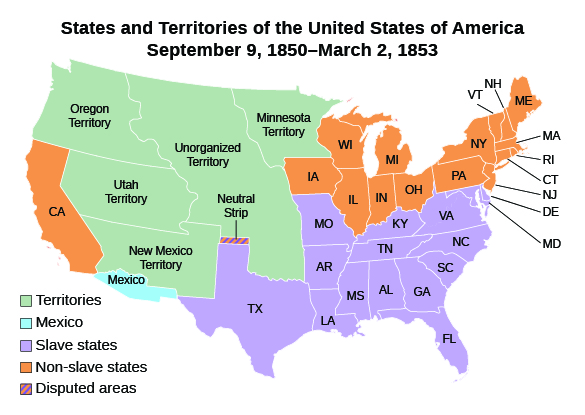- Home
- Social Studies
- Wagon Trains
Wagon Trains West
Early Wagons

In the early years of European settlement of North America, uninhabited land that lay to the west was “there for the taking.” The first settlers to leave the East Coast did so alone or in small groups, clearing trails through wild forests and building inland settlements along the way.
By the mid-eighteenth century there was regular movement of freight and people – often whole families – going from east to west. The trip was arduous. There were mountains and rivers to cross, and often the route went through lands inhabited by Indians, who sometimes attacked the intruders.
Wagon Trains

These perils, as well as the dangers of disease, hunger, and exhaustion, made it a good idea for people to travel in groups. They often used simple farm wagons with white canvas covers known as prairie schooners because they recalled seagoing ships as they moved over the expanse of the prairies and plains. The “wagon train” offered some protection, and the organizers were usually skilled fighters as well as skilled guides. The travelers were most vulnerable to surprise attack when they stopped for the night, so they would pull their wagons into a circle for defense and had guards stand watch.
Expanding Economies
By the 1850s, large numbers of folks were moving west. Many hoped to get rich from the natural resources (gold especially) of the western territories. Traders realized that they needed access to Pacific ports. American nationalists wanted to take over land still controlled by foreign empires. Texas had won its territory from Mexico and joined the United States in 1845. California became a state in 1850. The nation had tripled its territory in only half a century, and Americans began to believe that they had a God-given right to populate the continent ocean to ocean, an idea known as manifest destiny.

More …
- Write a paragraph about what motivated Americans to cross the continent in a covered wagon.
- Write a paragraph to explain why Americans were considered intruders by the Indians.
- Why would the trek across the continent endanger migrants with hunger and exhaustion.
- Define the term “schooner.”
- Make a list of natural resources that allowed settlers to prosper in the west.
- Who was the foreign power that claimed the Oregon territory?
Las Carretas van hacia el Oeste
En los primeros años de la colonización europea de América del Norte, el territorio deshabitado de Oeste estaba "a disposición de quien lo quisiera." Los primeros colonizadores que dejaron la costa este lo hicieron solos o en grupos pequeños, abriéndose paso a través de bosques salvajes y estableciendo poblados a lo largo del camino.
Okay, so now I've put on some ads from Amazon - from which I may earn a few cents. (2025)






